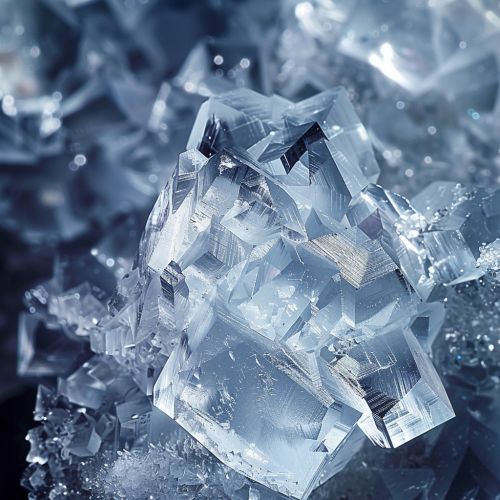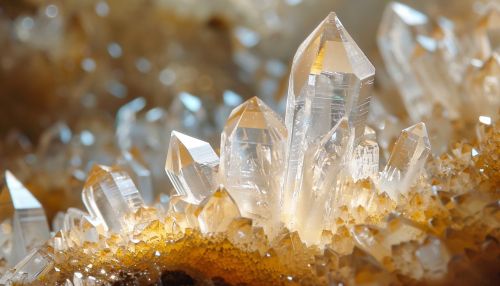Crystal growth
Introduction
Crystal growth is a major stage of a crystallization process, and consists in the addition of new atoms, ions, or polymer strings into the characteristic arrangement of a crystalline Bravais lattice. The growth typically follows an initial stage of either homogeneous or heterogeneous (surface catalyzed) nucleation, unless a "seed" crystal, purposely added to start the growth, was already present.
Mechanisms of Crystal Growth
Crystal growth is a dynamic process at the atomic level, as atoms are added to a crystal lattice. The process can be divided into two general categories: nucleation and growth. Nucleation is the step where the crystalline phase or nucleus starts to form in the liquid phase. Following nucleation, the nuclei grow by the successive addition of atoms.
Nucleation
Nucleation is the initial step in crystal growth, where a small number of ions, atoms or molecules come together in a stable arrangement to form a crystal nucleus. This can occur spontaneously when a supersaturated liquid forms a stable solid phase. However, nucleation often requires a trigger, such as a seed crystal or an impurity.
Growth
After nucleation, crystal growth is driven by the process of addition of atoms, ions or molecules. This can occur in a variety of ways, such as layer-by-layer growth, screw dislocation, or via the formation of two-dimensional nuclei.
Factors Influencing Crystal Growth
Several factors influence the rate and quality of crystal growth. These include the environment, the characteristics of the growing crystal, and the method used for growth.
Environment
The environment in which crystal growth occurs can greatly affect the process. This includes factors such as temperature, pressure, and the chemical environment. For example, high temperatures can increase the rate of crystal growth, while high pressures can inhibit it.
Crystal Characteristics
The characteristics of the growing crystal can also influence the growth process. This includes factors such as the crystal structure, the presence of defects, and the crystal's chemical composition.
Growth Methods
There are several methods used for crystal growth, each with its own advantages and disadvantages. These include the Czochralski method, the Bridgman method, and the flux method.
Crystal Growth Techniques
There are several techniques used to grow crystals, each with its own set of advantages and disadvantages. These include solution growth, melt growth, vapor growth, and solid-state growth.
Solution Growth
In solution growth, the crystal is grown from a solution of the material. This method is often used for materials that are difficult to grow by other methods.
Melt Growth
In melt growth, the crystal is grown from a melt of the material. This method is often used for materials that have high melting points.
Vapor Growth
In vapor growth, the crystal is grown from a vapor of the material. This method is often used for materials that have low vapor pressures.
Solid-State Growth
In solid-state growth, the crystal is grown from a solid of the material. This method is often used for materials that have high vapor pressures.


Applications of Crystal Growth
Crystal growth has a wide range of applications in various fields. These include materials science, geology, and the semiconductor industry.
Materials Science
In materials science, crystal growth can be used to produce single crystals for use in electronic devices, such as transistors and diodes. It can also be used to produce optical crystals for use in lasers and other optical devices.
Geology
In geology, the study of crystal growth can provide insights into the formation of minerals and the processes that occur within the Earth's crust.
Semiconductor Industry
In the semiconductor industry, crystal growth is a crucial step in the production of silicon wafers, which are used in the manufacture of integrated circuits.
